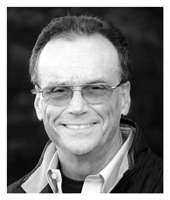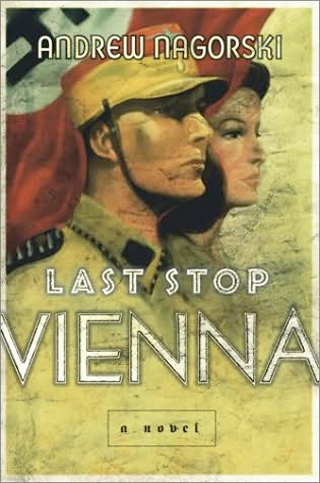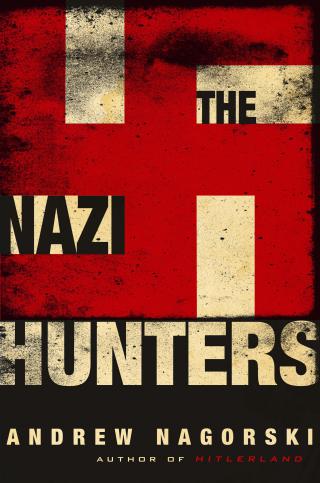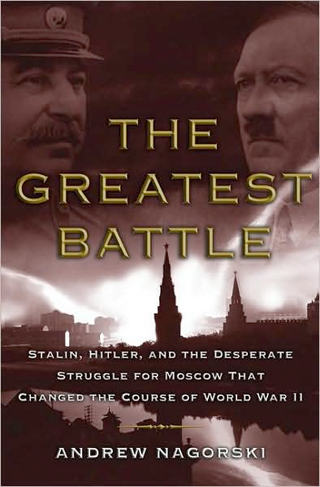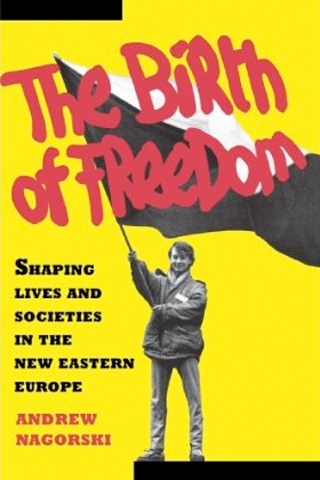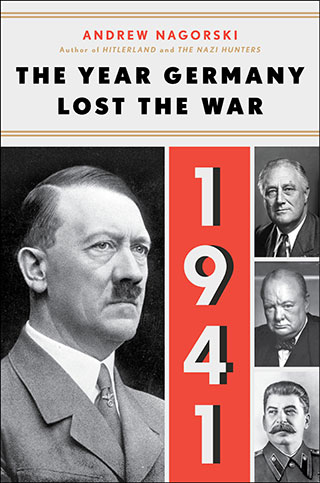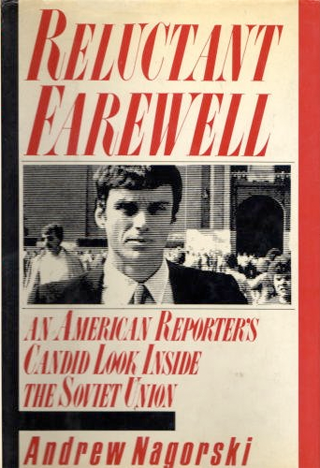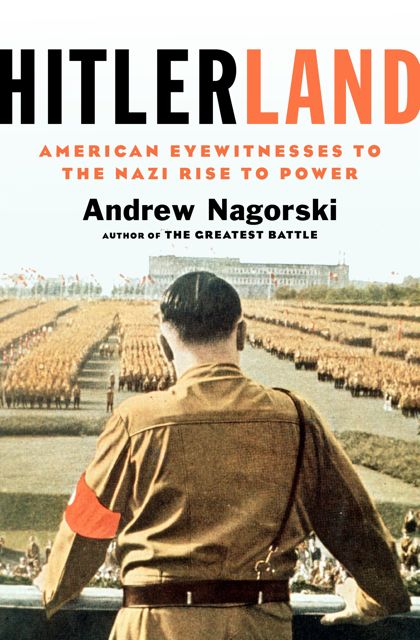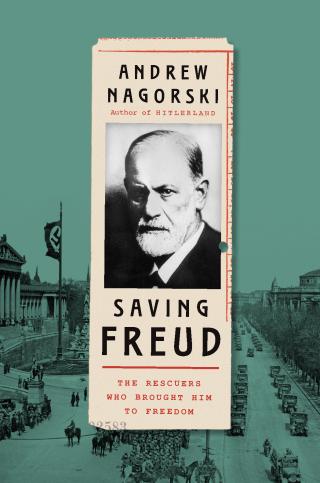
Detailed, dramatic, and at times gripping, Andrew Nagorski’s “The Nazi Hunters” looks at about a dozen men and women who kept pushing at a time when the world was trying to move on. Hunters like Simon Wiesenthal and Serge and Ben Klarsfeld are characters here, as are Gestapo chief Klaus Barbie, Auschwitz commandant Rudolf Hoess, “Angel of Death” Josef Mengele, “Bitch of Buchenwald” Ilse Koch, and the notorious Holocaust mastermind Adolf Eichmann.
Much of the book chronicles various hunts and tells the stories of those who led them. But it also considers the larger moral issues around the effort: Were these hunters motivated by vengeance? What could be gained by arresting rickety old camp guards, decades later? How much were the villains responsible for their actions?
We spoke to Nagorski, who worked as Newsweek’s bureau chief in Hong Kong and several European capitals, from New York, where he was touring behind the book. The interview has been lightly edited for clarity.
In “The Nazi Hunters,” you look at more than a dozen of these people. What did you find that they shared in common, if anything?
I thought a lot about that in the process. Obviously, all had a real zeal to keep this issue alive at a time when so many countries wanted to just put it behind them—of course the Germans and Austrians, but also the United States, Britain, even the Soviet Union to a large extent. Two personal qualities really struck me.
Each one had incredible determination. Someone like Ben Ferencz, who wouldn’t take no for an answer when they came up with this evidence, all the documentation on the Einsatzgruppen, the special killing squads in the east. Even with Telford Taylor saying, “We do not have the resources to hold another Nuremberg trial, and I don’t even have an experienced prosecutor.” And he’s a 27-year-old Harvard Law graduate and says, “I’ll do it.” And he conducts the biggest murder trial in history.
And they have what’s called chutzpah, whether they were Jewish or not. Beate Klarsfeld, the German part of the German-French couple in France and Germany, made it her mission to identify and demand the trial of SS officers who had been responsible for Jews from France. When no one seemed to be listening to her protests, especially in the ‘60s, when there was briefly a German chancellor by the name of Kiesinger who had been a Nazi and who had served the regime, she was so incensed by the lack of response that she got herself a press pass, went to a party convention, and then pretended to be passing behind the stage and walked right up to Kiesinger and gave him a slap across the face and shouted, “Nazi! Nazi!” This is the same year that Bobby Kennedy and Martin Luther King were assassinated—she could have been killed.
These were people who had very strong personalities. Sometimes they even had conflicts among themselves about strategy and methods, and they worked independently often. Whether they were government prosecutors, investigators, or private citizens who had just made it their cause, I think those two qualities stand out to me.
Given that they have certain things in common, was there a character here you found especially fascinating or inspiring?
Well there are several, but I’ve already mentioned Benjamin Ferencz, who is still alive. He’s 96 years old. He’s about 5 foot tall and just continues to be incredibly passionate about his cause.
Fritz Bauer is a very interesting character who’s only been rediscovered in Germany in the last few years. When I started this project, very few people knew about him. Now more do, because there have been some biographies and films about him. He was a Social Democrat from a secular Jewish family and was first prosecuted by the Nazis because he was a Social Democrat, not because he was Jewish. He fled and was in Denmark and Sweden during the war and then came back from exile. In the early ‘50s, when the Cold War had set in and no one wanted to fight these cases nor even talk about them, he was just determined to find ways to make the Germans confront their past.
The United States and Britain were more concerned with the Soviet Union. We were trying to put this stuff behind us, and West Germany was an ally at this point.
Yes, West Germany was an ally. We wanted people to not antagonize the Germans at this point. I talked to a man who had been in charge of the first CIA base in Berlin after the war. He was from a German-Jewish family and had gotten out as a boy in the ‘30s and eventually ended up in the United States. He joined the army and the OSS, the forerunner of the CIA, and then joined the CIA and becomes the head of this base. I asked him about his attitude towards Nazis at that point when the Cold War set in and he said, “None of us were interested in fighting the last war. What we had to do was done in Nuremberg and the Dachau trials, and now we had two urgent concerns: Russians snatching scientists and trying to maintain support in West Germany for the cause of the Western Alliance.”
People forget how quickly this was put on the back burner. Even Israel, after it was created, was not necessarily in the business of hunting Nazis. That’s one of the great myths, that there were Israeli Nazi hunters everywhere. Eventually there was the spectacular kidnapping of Adolf Eichmann, but that was much more the exception than the rule. They were concerned with securing their own existence, which was imperiled at every turn.
To what extent were the Nazi hunters motivated by vengeance, versus a sense of justice?
I think initially, of course there was a motivation of vengeance. Wiesenthal said his first instinct was, “Of course I want these guys to pay, who kept me in Mauthausen and other camps.” Another Holocaust survivor, Tuviah Friedman, who was also one of the early Nazi hunters, actually joined the Polish communist security police that was interrogating Germans and others. He said, “I’m not proud of it now, but I was not giving anyone the benefit of the doubt and I was working them over as vigorously as I could.”
U.S. troops liberating something like Dachau witnessed scenes, for instance, where prisoners were suddenly turning on their captors and sometimes beating them to death. They would often look away, feeling not only I can’t stop them, but also, Do I want to stop them?
Part of the thing about the trials was that the notion was that this was not going to be vengeance. First of all, you owe it to the victims to put some people on trial, but also, you owe it to history and to our understanding of history to put it on the record. Because our understanding of genocide, of the Holocaust, of the horrors of World War II, is, to a large extent, the product of these efforts of the Nazi trials, a few of which continue today. Without that, I think the tendency, certainly within Germany and Austria, was to say, “Oh, it was a war. Bad things always happen in a war.” At the end of most wars, the victors might execute a bunch of the vanquished and pillage and rape and so forth, and then that would be over.
But here it was to establish some international norms, to show that this was no ordinary war, that to say you were just following orders was not acceptable, and in fact, in some ways condemned you. Because you clearly knew that these were orders that defied every notion of human rights and international norms. So it set knew principles. Now, whether we have lived up to those principles or not is a different matter, but it was unprecedented, what happened.
Jan Sehn is one of the interesting characters who is totally unknown in the West and even in Poland, I found. He was the investigator right after the war who conducted all of the interrogations of Auschwitz personnel and some of the other concentration camps, including the commandant of the small concentration camp that’s featured in “Schindler’s List” — Amon Goeth — and Rudolf Hoess, the longest serving commandant of Auschwitz. [Sehn] was, as the Polish interrogator, now representing a Polish communist government—in other words, a Stalinist government. He was not a Stalinist by a long shot, but he was representing them. He could have just gotten a short statement and had them hanged, but instead, he worked, especially with Hoess, to get his whole story: everything about how he helped create this horror of a camp and how it functioned and his psychology. It resulted in what became his autobiography after he was hanged.
It’s one of the most chilling records of the Holocaust I think we have, and it’s largely forgotten, but not by other Nazi hunters. For instance, Gabriel Bach, the last surviving member of the prosecution team of Eichmann in Israel, told me that before he saw Eichmann for the first time, he was sitting outside his prison cell reading this autobiography. I think what someone like Jan Sehn was doing, he realized it was his responsibility, before these people were put away or executed, to get the record so that there’s no dispute.
Jan Sehn’s name appears on almost every testimony of living Auschwitz personnel, which are now in the archives of the Holocaust Museum in Washington and the Polish archives. He cooperates with Fritz Bauer in Germany, who is German-Jewish—Jan Sehn, incidentally is from a Polish family of German Christian descent. They cooperate across the Iron Curtain in assembling the information that is the basis for the Auschwitz trials that take place in Germany in the ‘60s, that in turn spark this whole movement in Germany of the ‘60s generation, who would turn on their parents and say, “What did you do during the war?” and “We have to break the silence on this.” At that time, Poland and West Germany didn’t even have diplomatic relations. These two men, of very different backgrounds, but driven by the same motives, managed to pull this off.
Some of these characters on both sides, Eichmann and Wiesenthal for instance, are sort of cinematic, larger-than-life characters. But how much of the process that you recount here really resembled a movie?
“The Boys from Brazil” and “Marathon Man,” were great movies, great fun, enthralling—they have very little to do with reality. I mean, it is true that the whole hunt for Eichmann and the actual operation that Mossad pulled off, which is fascinating—by the way, it was prompted from a tip by Fritz Bauer, a West German prosecutor who doesn’t trust his own government enough to give them that information and gives it to the Israelis—that is drama, which is high drama.
But it’s also true that aside from some of these really top Nazi criminals who feel they need to flee Europe and hide elsewhere—Klaus Barbie, Josef Mengele, those kinds of people—there are many, many war criminals who simply went back and resumed their lives, often taking ordinary jobs, some in the civil service. That was true in both East Germany and West Germany, even though the Soviet side always claimed that all the war criminals were in West Germany.
The best way in East Germany to prove your loyalty to the new regime, if you had been a Nazi party member or a member of the Gestapo, was to serve the new regime and join the Communist Party or the Stasi, the secret police. It was overdramatized in many cases. I think it was Beate Klarsfeld who proved the fact of how many of these people were living out in the open. The way she found one of the key people she was looking for, a Gestapo officer in France, was she called information in Cologne. In effect, he was in the Cologne phone book. You didn’t have to go to South America for that.
Even though the mythology is exaggerated, Wiesenthal sort of understood the power of publicity. He liked the fact that someone like Josef Mengele who managed to elude the authorities. Now recent letter and diaries indicate that he was really fearful that the Israelis were on his trail all the time, when in fact they made some attempts but then gave up on that because they had other priorities. The fact that he felt hounded and felt it necessary to live in very shabby conditions not to attract attention to himself, maybe there’s a little poetic justice in that, even though he drowned—it looked like he had a heart attack while swimming in Brazil.
Scott Timberg is a staff writer for Salon, focusing on culture. A longtime arts reporter in Los Angeles who has contributed to the New York Times, he runs the blog Culture Crash.He's the author of the new book, "Culture Crash: The Killing of the Creative Class."
